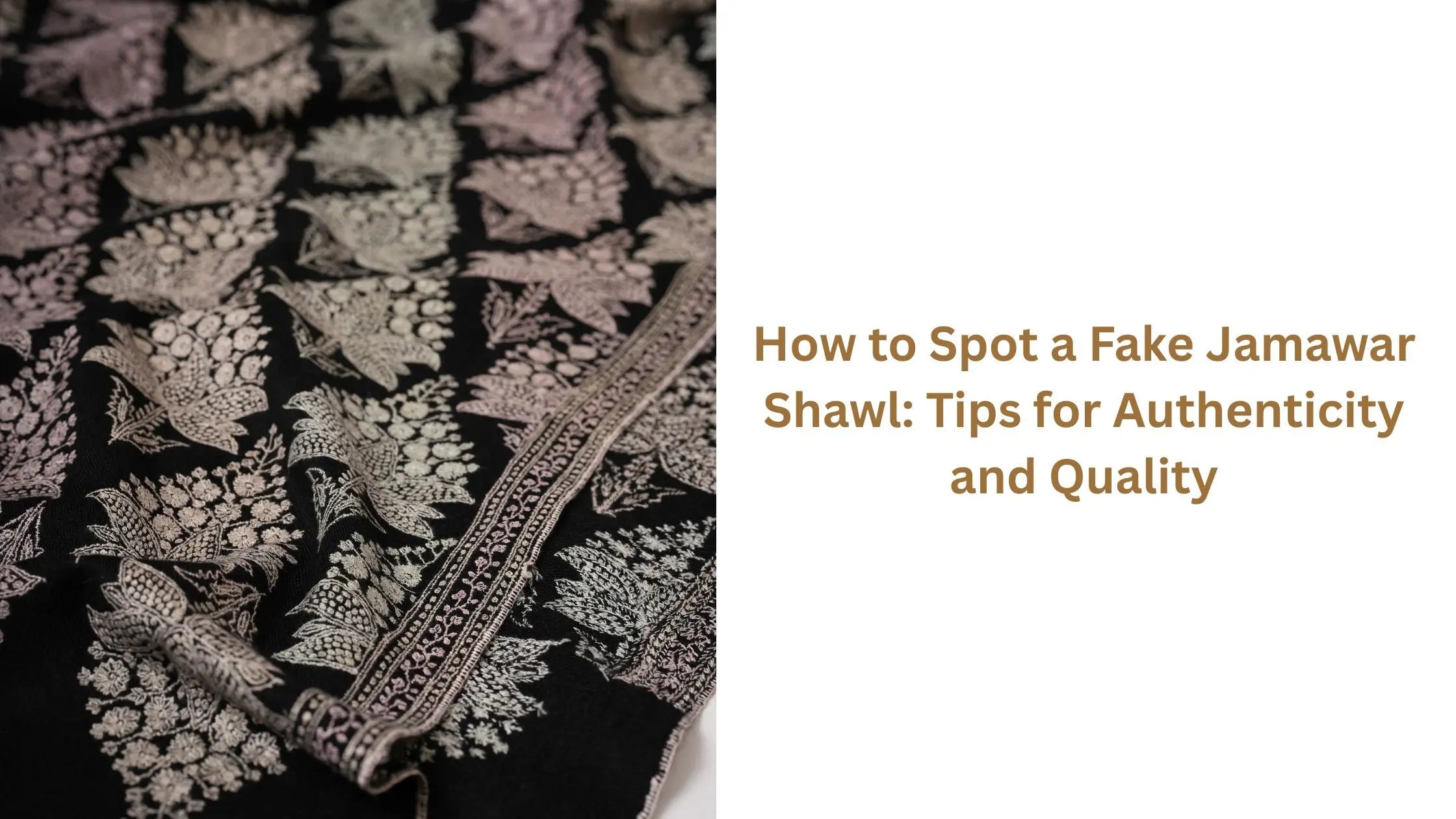
How to Spot a Fake Jamawar Shawl: Tips for Authenticity and Quality
Buying a Jamawar shawl can feel exciting. The rich look, the feel of the fabric, and the detailed designs. But many shoppers end up disappointed. They think they have found a treasure. Later, they discover it is just a poor imitation.
Real Jamawar shawls are special. They carry history, culture, and skill. They take months to create by hand. Sadly, the market is full of fakes. Sellers know buyers love these woolen shawls, so they flood the market with cheap copies.
This guide helps you know what makes a Jamawar pashmina Shawl authentic. You will know how to check the fabric, the patterns, and the finishing. You will be able to tell the difference between a fake and the real deal.
Understanding the Essence of a Jamawar Shawl
These shawls are more than luxury winter shawls. They are works of art. Each piece is made through intricate weaving or careful embroidery on soft fabric. The tradition comes from Kashmir. A place known for weaving and embroidery for centuries.
The shawls stand out with all-over designs. Paisley motifs and rich colours make them special. The process is slow. Delicate too. Some designs are woven directly into the fabric with special bobbins. Others are hand-embroidered onto a plain pashmina base.
That is why old Jamawar shawls are treasured as heirlooms. Each one is unique. A result of rare skill. Handmade Indian shawls reflect months of dedication. Pure artistic hard work.
Knowing this essence makes you value the shawl. It is the first step in spotting authenticity.
How to Distinguish Between Authentic and Fake Jamawar Shawls
Knowing the difference between various types of craftsmanship is key to spotting an authentic Jamawar shawl.
|
Feature |
Authentic Woven Jamawar (Kani) |
Authentic Embroidered Jamawar (Sozni) |
Common Fake (Machine-Made) |
|
Technique |
The intricate design is woven directly into the fabric using a special loom and small wooden bobbins called 'kanis'. |
The elaborate design is meticulously hand-stitched onto a plain pashmina base fabric using a fine needle. |
The design is created using machine embroidery, or it is simply a printed pattern or a kani imitation. |
|
Reverse Side |
The woven pattern shows a mirror image of the design with no loose threads. It looks like a seamless part of the fabric. |
The back will show fine, neat hand-stitching. There are no large knots or messy threads, which is a sign of skilled artistry. |
The back shows a jumble of tangled threads, large knots, or a messy finish. Printed fakes will have a plain, blank reverse side. |
|
Intricacy & Feel |
The patterns are complex and integrated. The shawl feels smooth and flexible, with the pattern seamlessly part of the drape. |
The embroidery is fine and raised, giving the shawl a rich, tactile texture. The stitches are precise and detailed. |
The design lacks depth and detail. The fabric can feel stiff, coarse, or have a rough, machine-like texture. |
Examining the Fabric and Feel
The fabric tells you a lot about authenticity. Genuine traditional kashmiri shawls are most often made with pure pashmina. The result is a shawl that is incredibly soft, warm, and lightweight, yet has a natural and elegant drape.
-
Feel the texture: Real shawls feel warm, smooth, and have a unique softness. Fakes, which are often made of synthetics or low-quality wool, can feel stiff, coarse, or unnaturally slick and slippery.
-
Check the fibers: Authentic pashmina fibers are extremely fine and soft. Synthetic threads, in contrast, look too perfect and lack the natural, subtle imperfections of a natural fiber.
-
Weight matters: An authentic pashmina Jamawar shawl is known for being surprisingly light for the amount of warmth it provides. This is a key sign of quality. Fake shawls made from inferior materials may feel heavy, bulky, or thin and insubstantial.
Another clue lies in the craftsmanship. Both hand-weaving and hand-embroidery are traditional methods. The design is an integral part of the fabric, whether woven in or meticulously stitched on top. Fakes often use machine embroidery or printing, which lacks the depth, precision, and strength of genuine artisan work.
Analyzing the Design Motifs and Colors
The motifs are the soul of a Jamawar shawl. Paisley is the classic one. But you will also see fine florals and geometric shapes. This is where you tell real from fake.
-
Detail and Clarity: Real hand-woven or hand-embroidered motifs look sharp. The stitches are fine, almost flawless. Fakes show coarse work and rough edges.
-
Color Integration: Authentic shawls use natural dyes or traditional dyes. The colors sink deep, rich and smooth. They blend with ease. Duplicates look flat, too bright, or artificial.
-
Symmetry and Flow: Genuine motifs move with balance and grace. Tiny variations add charm. Fakes look stiff, uneven, or too repetitive.
Every motif in an authentic Jamawar shawl carries artistry. You can feel the story in every thread.
Evaluating the Overall Quality and Finishing
The finishing details of a Jamawar shawl say a lot about its authenticity. Real pieces show the pride and skill of the artisan. Even the smallest touch matters.
-
Edges and Fringes
An authentic Jamawar shawl has a clean, high-quality finish. Many have a fine “eyelash” fringe. The edges stay neat. Never raw or frayed. Loose threads or a machine-cut look are clear signs of mass production.
-
Stitching
If the shawl has hand-embroidery, check the stitches. They will be fine, even, and tightly packed. The reverse side will be clean, with no messy knots. Fake shawls often show flat, repetitive machine stitching that lacks texture and character.
-
Weight and Drape
A true pashmina Jamawar shawl feels light yet full. It drapes smoothly and moves with ease. Fakes made with synthetics feel stiff and lack the soft flow of real wool.
Remember, a Jamawar shawl is not just another winter accessory. It is an investment. A true jamawar pashmina shawl is a keepsake that lasts for generations.
FAQ
What is the main difference between a real and a fake Jamawar shawl?
Authentic Jamawar shawls are made by skilled hands. They can be woven or hand-embroidered. Fakes are machine-made, usually on cheap synthetic fabric.
How can I tell if the paisley design is woven or embroidered?
You can check the back of the shawl. Woven designs show a faint, mirror image of the pattern. Authentic hand-embroidered designs will show very fine, neat stitches.
What kind of fabric is used in an authentic Jamawar shawl?
Most genuine ones are made with pure pashmina wool, which is a specific, high-quality cashmere.
Are all Jamawar shawls very expensive?
Yes, unless they are fake. Genuine pieces are a big investment. Prices vary by fabric and design. Intricate woven (Kani) and dense hand-embroidered (Sozni) shawls are costly.
What are some common motifs found on Jamawar shawls?
Common motifs include paisleys, floral designs, and Mughal-inspired patterns.
Conclusion
Pay attention to the fabric, the weave, the motifs, the colors, and the finishing. Each detail matters. A real shawl is woven into shape, rich in color, heavy, and neatly finished. Fakes are often messy in the details.
A Jamawar shawl is not just a luxury winter shawl. It carries cultural history in every thread. When you buy one, you are buying art, patience, and skill. That is why it is safer to choose sellers you can trust.
At Shahkaar, we stand for authenticity. Skilled Kashmiri artisans craft our Jamawar shawls. Each piece shows true tradition and fine workmanship. Explore our women’s ethnic wool wraps and enjoy the timeless charm of a genuine jamawar pashmina shawl that will stay with you for years.

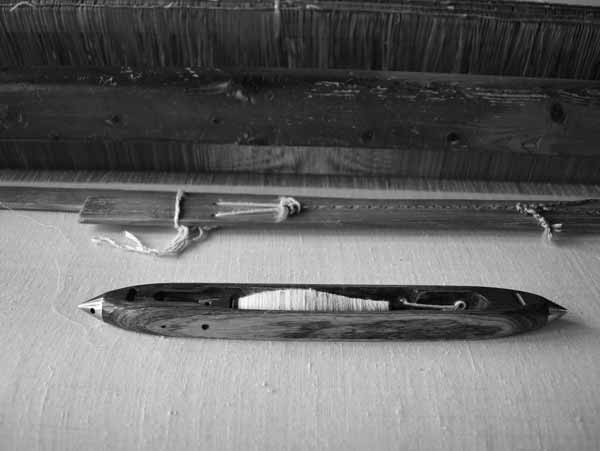
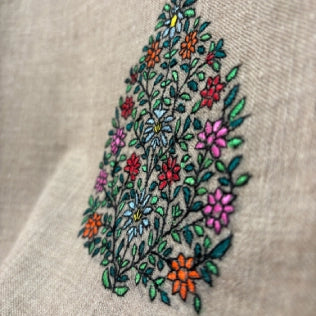
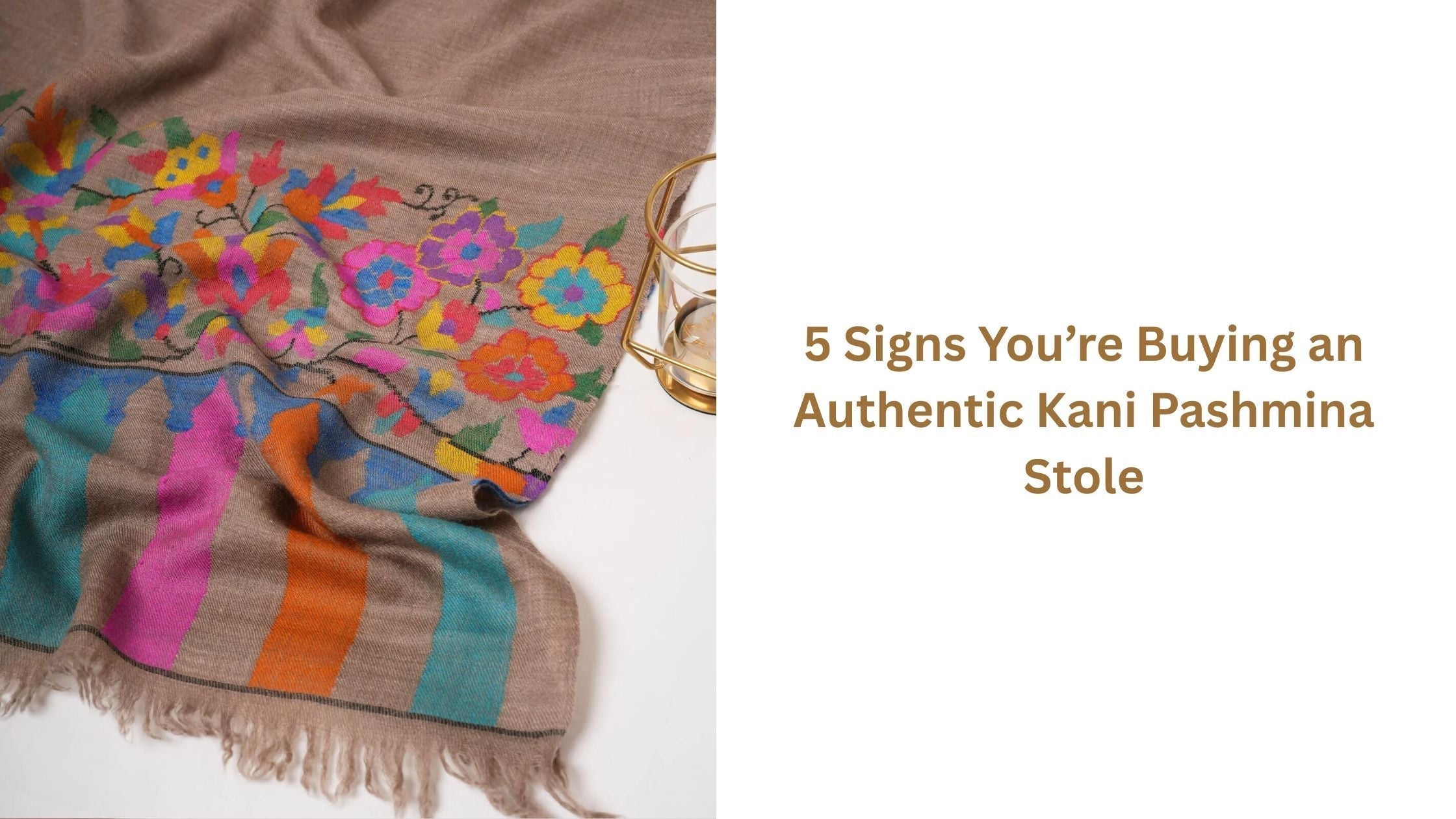
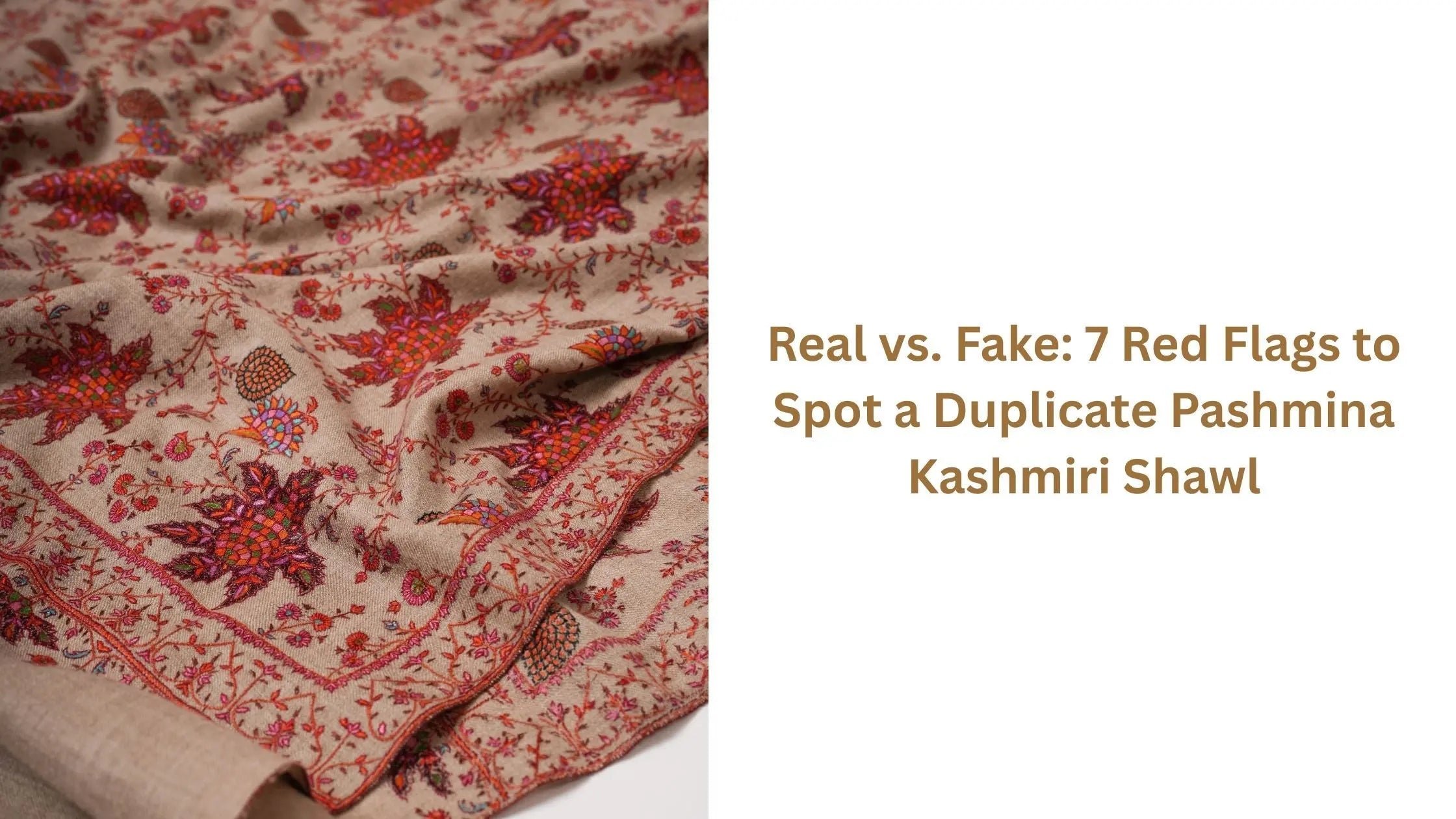
Leave a comment
This site is protected by hCaptcha and the hCaptcha Privacy Policy and Terms of Service apply.